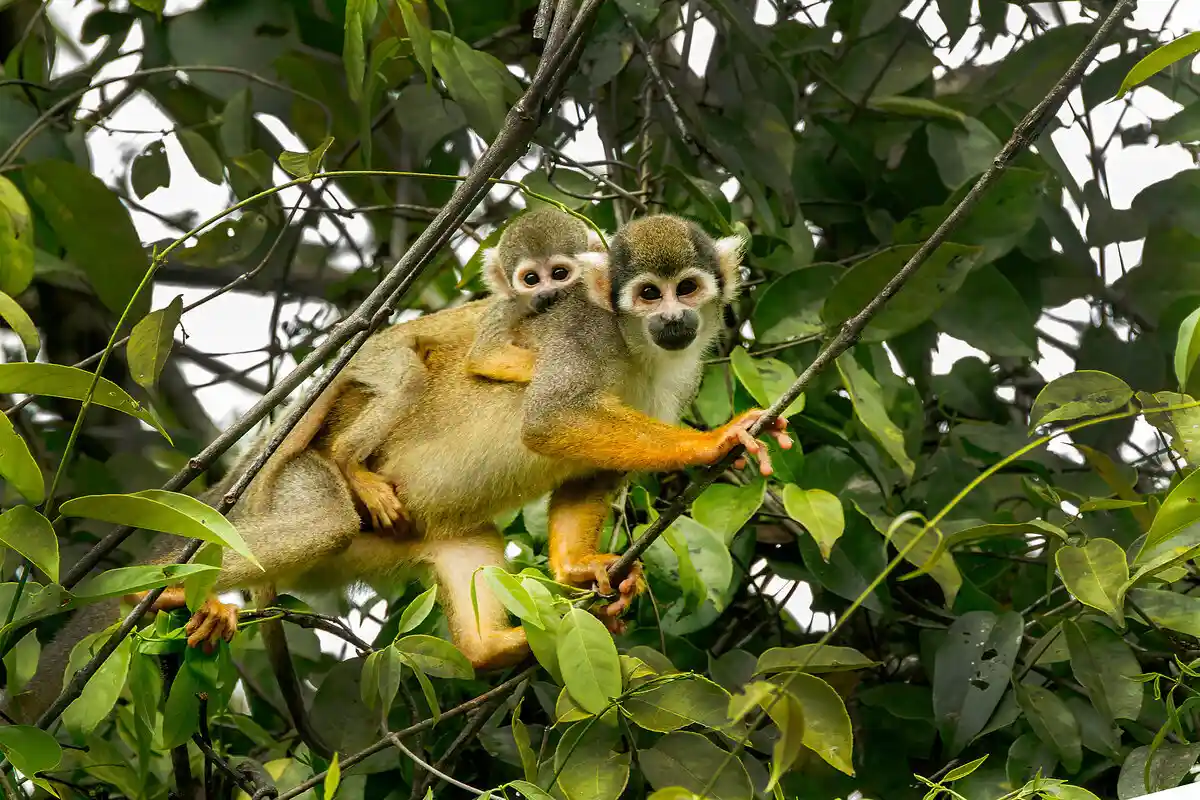The Manu Biosphere Reserve, part of the Manu National Park in southeastern Peru, is a vast protected area recognized by UNESCO. It stretches from the Andes (13,000 ft / 4,000 m) down to the lowland Amazon rainforest (920 ft / 280 m), creating a tremendous diversity of ecosystems. In its jungles live jaguars, giant otters, macaws, spider monkeys, and more than a thousand bird species. Exploring this reserve is a once-in-a-lifetime adventure—imagine photographing a jaguar at sunrise or a colorful macaw in mid-flight.
To make the most of the experience, it is recommended to book in advance with reliable agencies, such as Travel Peru Agency, since access is restricted and local guides ensure a responsible visit. Below, you’ll find everything about when to go, what to see, and how to get to Manu, including practical tips, top activities, and what to pack for your trip.

How to Get to the Manu Biosphere Reserve?
The most common route to Manu is from Cusco:
- By land: Around 10–12 hours to reach Paucartambo or Atalaya, traveling from the Andes to cloud forest.
- By river: From Atalaya, travel by boat on the Madre de Dios River to Boca Manu (the park entrance).
- Alternative: Fly from Cusco to Puerto Maldonado, then travel by land to Atalaya.
Important: Entry is only allowed with authorized tours and expert guides. The journey is long but offers spectacular scenery.
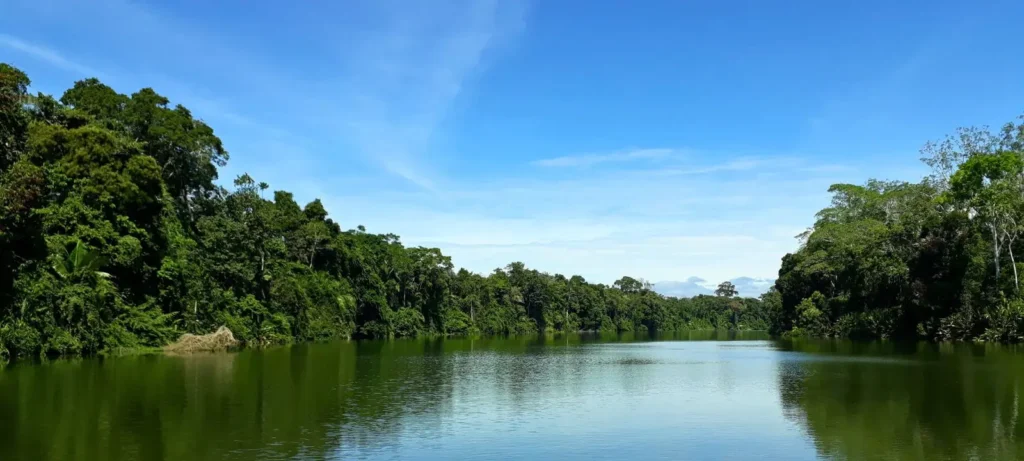
When to Visit the Manu Biosphere Reserve?
The best time to visit Manu is during the dry season, approximately from May to October. During those months, rainfall is minimal, trails are passable, and conditions are ideal for hiking and photography.
On the other hand, the rainy season (December to March) makes the jungle denser and rivers swell. Some photographers prefer January and February because the abundance of fruit attracts more wildlife and macaw clay licks are busy. During this time, vegetation is lush, but visitors must tolerate frequent rain and muddy trails.
Summary:
- May to October: stable weather, clear skies, accessible trails.
- January and February: increased animal activity, lush vegetation, but with rain.

What to See in the Manu Biosphere Reserve?
The Manu Reserve is a natural sanctuary teeming with life.
Iconic animals:
- Jaguars, spider monkeys, ocelots
- Macaws, toucans, cock-of-the-rock
- Giant otters, black caimans, capybaras
- Sloths, freshwater dolphins
Remarkable flora:
- Orchids, bromeliads, and giant trees like the ceiba and lupuna
- Around 10% of the planet’s plant species
Cultural experience:
- Visits to Indigenous communities (Matsiguenka, Yine, Amahuaca), where ancestral traditions are preserved.

Benefits of a Photo Tour in the Manu Biosphere Reserve
- More wildlife to photograph: At certain times (e.g., end of the rainy season), the forest offers abundant food, attracting rare species like exotic birds, aquatic mammals, and caimans on trails and rivers.
- Few tourists: Choosing the off-season means more rain but fewer tourists. This allows for greater privacy and better photographic opportunities.
- Green landscapes: The vegetation becomes lush and the lakes (cochas) fill up. Sunrises and sunsets in the jungle mist offer stunning photography.
- River navigation: With high river levels, boat tours are longer and more interesting. Visitors can explore remote cochas and take night walks looking for insects or wildlife along the banks.
- Immersive experience: By combining photography with ecotourism, you’ll live a unique adventure: interacting with the wild nature of the Amazon and capturing memorable images in a nearly untouched environment.

Activities to Do in the Manu Biosphere Reserve
Tours in Manu offer a variety of unique experiences that combine nature, culture, and adventure:
- Birdwatching: With over 1,000 species recorded, it’s a paradise for birders. Sunrise outings to observe the Andean cock-of-the-rock at its lek, as well as tarantulas, toucans, and other species in the forest.
- River and lake navigation: Boat excursions on the Madre de Dios River offer sightings of caimans, otters, river dolphins, and countless aquatic birds in their natural environment. Many routes lead to remote lakes where wildlife appears on the shores.
- Guided walks (day and night): Hiking through the lowland Amazon and cloud forest reveals flora, insects, amphibians, and mammals. Night walks showcase tarantulas, frogs, or nocturnal mammals. Guides point out animals and plants along the way.
- Clay lick visits: Stops at natural viewing areas where hundreds of parrots and macaws gather to eat clay. Watching the “macaw clay lick” is a breathtaking photographic spectacle, especially at sunrise or sunset.
- Cultural encounter: Some excursions include interaction with Indigenous communities like the Matsiguenka or Amahuaca. Hikes to local villages offer insights into handicrafts, traditional medicine, and ancestral music.
- Photography and relaxation: Many lodges offer viewpoints and observatories overlooking the jungle—perfect for landscape photography. It’s also common to relax by swimming in natural pools or the hot springs of Shintuya.
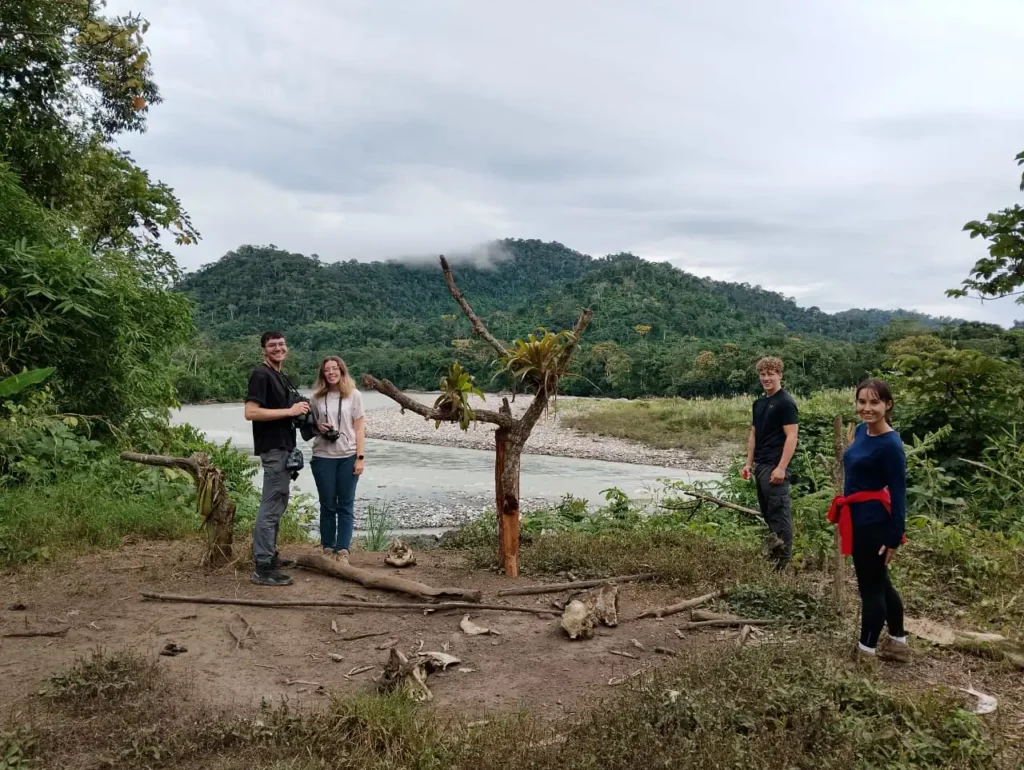
Best Time for a Photo Tour in the Manu Biosphere Reserve
- May to October (dry season): clear skies and better access, ideal for photographers.
- January-February: active jungle, macaws at clay licks, dramatic photos, but with more rain.
Recommendation: If you prefer comfort and good visibility, go during the dry season. If you want unique shots and more animal activity, take the risk at the end of the wet season.
Practical Tips When Visiting the Manu Biosphere Reserve
- Book in advance, with reliable agencies like Travel Peru Agency.
- Bring long-sleeved clothing, waterproof boots, insect repellent, a hat, and a rain poncho.
- Get vaccinated for yellow fever and inquire about malaria.
- Always follow your guide’s instructions. Do not separate from the group.
- Don’t litter, don’t feed the animals, and avoid making noise. Respect the natural environment.
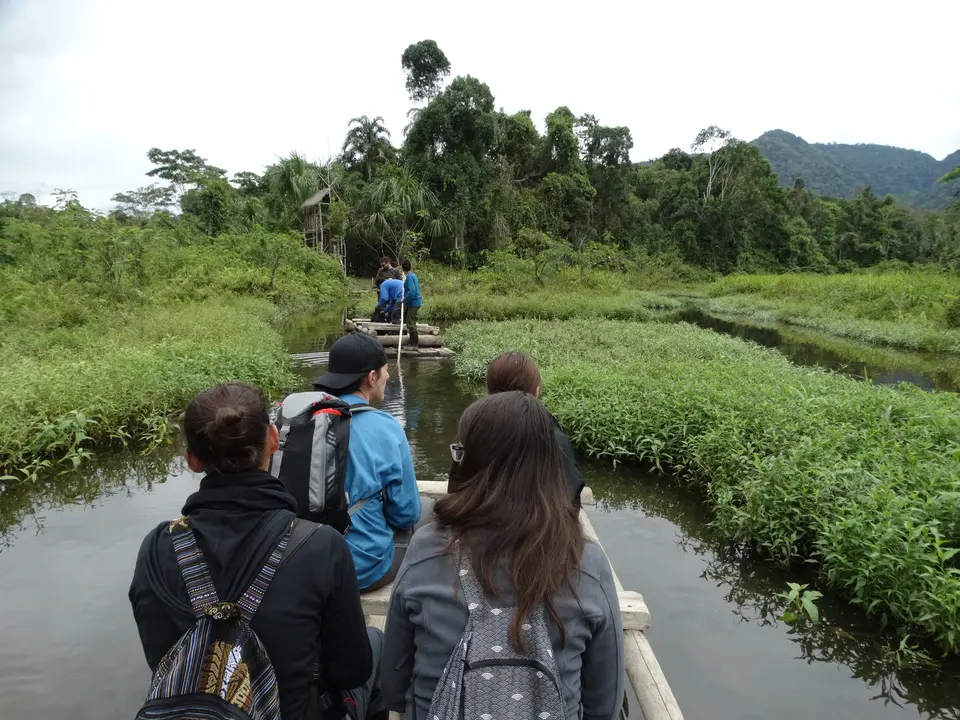
What to Bring on Tours to the Manu Biosphere Reserve
- Quick-dry clothing, neutral colors, swimsuit, sweater.
- Hiking boots and comfortable sandals.
- Insect repellent, sunscreen, hat, and sunglasses.
- Rain gear/poncho and dry bags to protect your gear.
- Headlamp with extra batteries.
- Professional camera and binoculars.
- Personal first aid kit and specific medication.
- Passport, travel insurance, and cash (there are no ATMs).
- Snacks, extra underwear, and protection for electronic devices.
Frequently Asked Questions About the Manu Biosphere Reserve
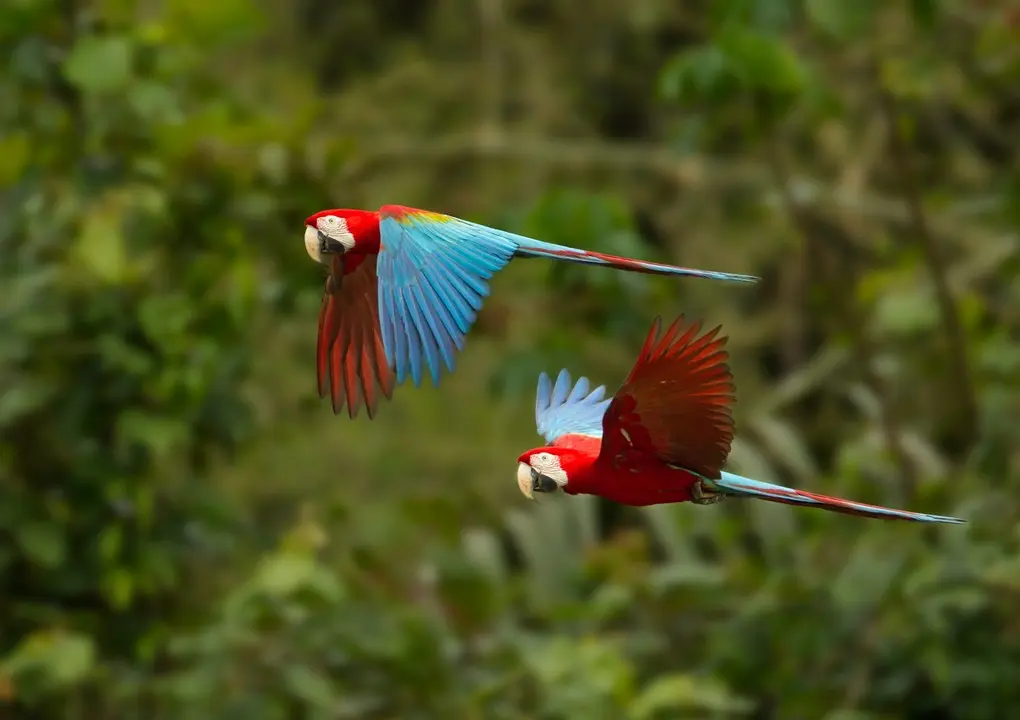
1. How many days are recommended to visit the Manu Reserve?
It is recommended to plan at least 4 to 7 days. The journey to Manu is usually long (bus + boat), and each zone of the park (cloud forest, Amazon rainforest, clay licks) deserves time. A typical tour lasts 4–5 days, but with 6–7 days you can explore more calmly and enjoy more wildlife sightings (birds, mammals, and communities).
2. Can I explore the Manu Reserve on my own?
No, access is restricted and only allowed through tours organized by authorized agencies. This rule aims to protect the reserve and ensure visitor safety. Traveling with an authorized guide also ensures compliance with park regulations and a better experience (with explanations and safe routes).
3. What vaccines are recommended before traveling to the Manu Biosphere Reserve?
Although no vaccines are legally mandatory, it is highly recommended to get vaccinated against yellow fever before entering the jungle. Vaccinations for hepatitis A, tetanus, diphtheria, and typhoid are also advised. Vaccination should be done at least 2 weeks before the trip. Many travelers also take malaria prophylaxis after consulting a doctor.
4. Is there accommodation inside the Manu Reserve?
Yes, there are rustic eco-lodges inside the park. These accommodations are basic (beds with mosquito nets, cold showers) but allow you to sleep in the middle of the jungle. Most do not have continuous electricity (only in common areas or for limited hours). Staying overnight is part of the charm: lights go out at night, and all you hear are the sounds of the jungle. The lodges offer home-cooked meals and direct contact with nature.
5. Is it safe to visit the Manu Biosphere Reserve?
Generally yes, as long as you follow the instructions of authorized guides. Travel agencies take safety measures (full first-aid kits, trained bilingual guides, small groups). It is important to follow their instructions at all times. The jungle can pose challenges (swollen rivers, wild animals), but organized tours minimize risks. It is also recommended to have travel insurance that covers medical evacuation in remote areas.
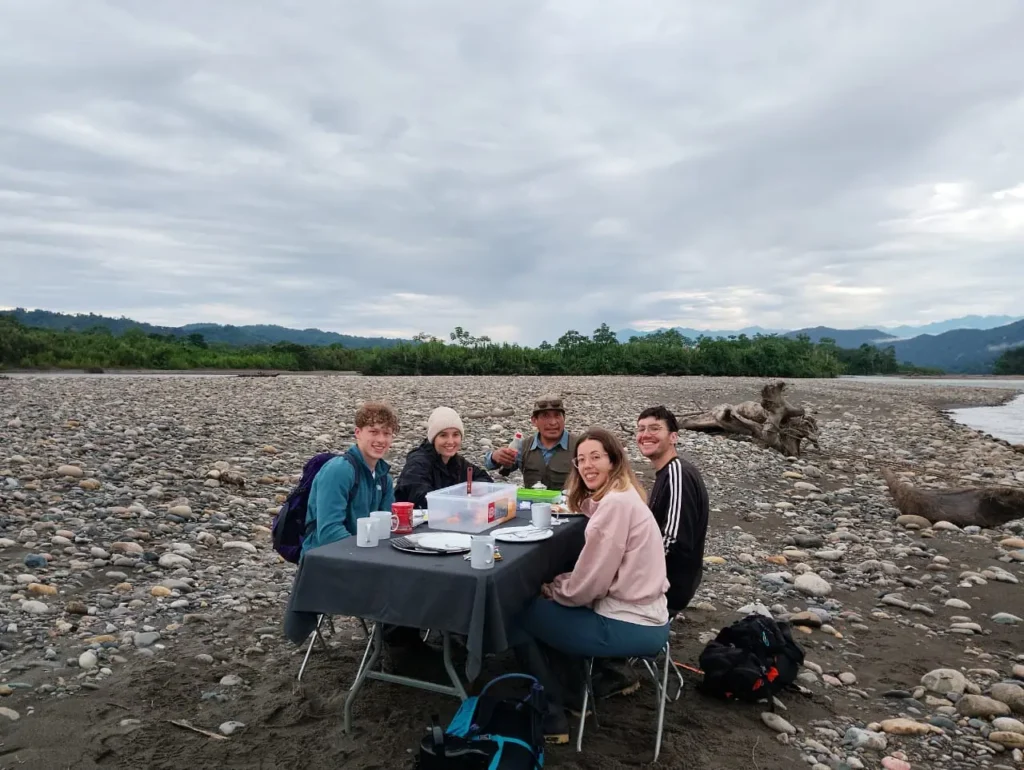
The Manu Biosphere Reserve is one of the most spectacular destinations in Peru. From the Andes to the Amazon, it is home to jaguars, macaws, and over a thousand bird species. It is ideal for photography, wildlife watching, and cultural contact with indigenous communities. Access is only possible through reliable tours, with Travel Peru Agency being a recommended option to explore this natural wonder. Contact us and book your tour to the Manu Biosphere Reserve.
